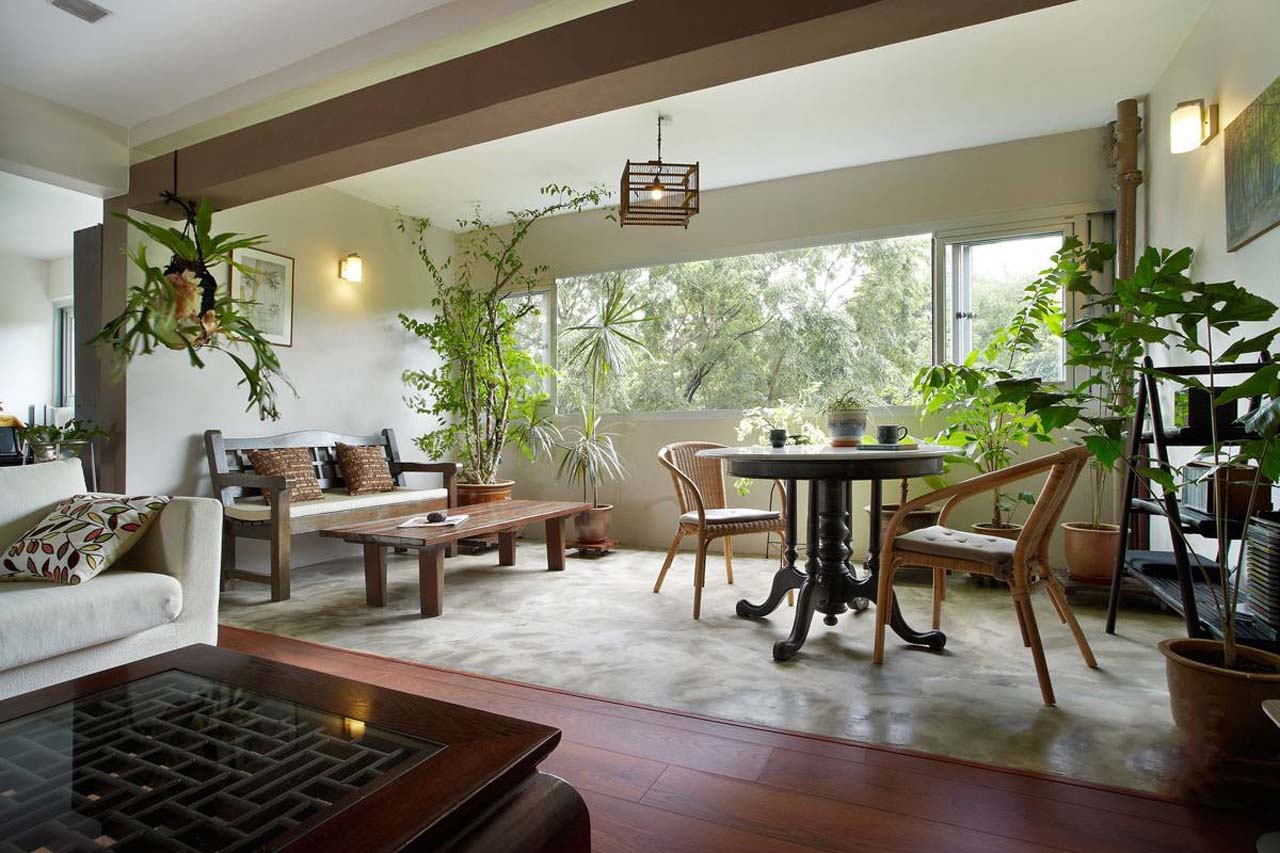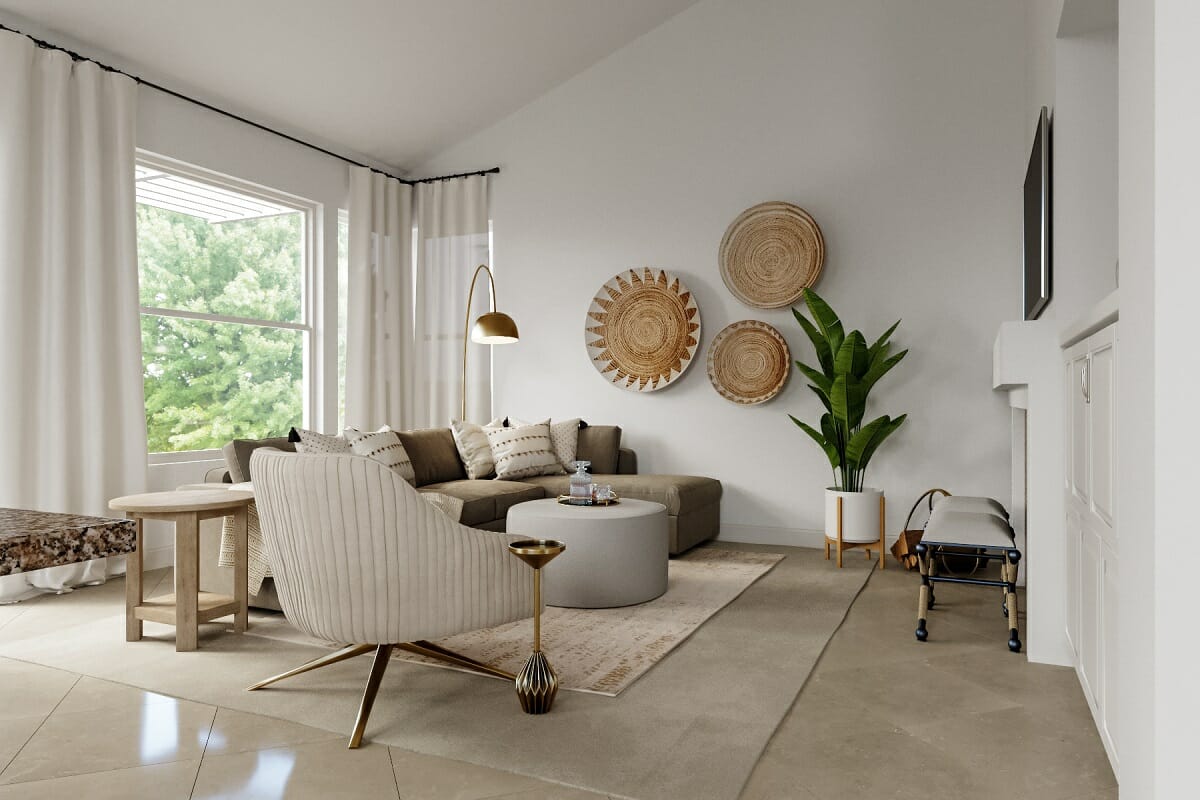Interior Ideas for Eco-Friendly and Sustainable Homes: A Guide to Creating a Greener Living Space
Embark on a journey towards sustainable living with our guide on Interior Ideas for Eco-Friendly and Sustainable Homes. Discover how to design your living space with eco-friendly materials, energy-efficient lighting, indoor plants, and water conservation features that not only benefit the environment but also enhance your well-being.
Dive into this enriching topic with us.
In the following paragraphs, we will explore various aspects of eco-friendly interior design, from sustainable materials to water conservation features, providing you with valuable insights to create a greener and healthier home environment.
Sustainable Materials
Using eco-friendly materials in interior design is not only a trend but also a responsible choice for creating a sustainable living space. These materials are sourced and produced in a way that minimizes harm to the environment and promotes a healthier lifestyle.
List of Eco-Friendly Materials:
- Bamboo: A fast-growing and renewable resource that is durable and versatile for various applications.
- Cork: Harvested from the bark of cork oak trees without harming them, cork is a sustainable and resilient material for flooring and wall coverings.
- Recycled Glass: Repurposed glass can be used for countertops, tiles, and decorative elements, reducing waste and energy consumption.
- Reclaimed Wood: Salvaged from old structures or furniture, reclaimed wood adds character and warmth to interiors while reducing the demand for new timber.
Benefits of Sustainable Materials:
- Reduced environmental impact: Sustainable materials help conserve natural resources and reduce carbon emissions during production.
- Healthier indoor air quality: Eco-friendly materials emit fewer volatile organic compounds (VOCs) and toxins, creating a cleaner and safer indoor environment.
- Long-lasting durability: Many sustainable materials are as durable, if not more durable, than traditional options, ensuring longevity and reducing the need for frequent replacements.
Contribution to Healthier Indoor Environment:
By choosing sustainable materials for your home decor, you can significantly improve indoor air quality and reduce the risk of respiratory issues and allergies caused by harmful chemicals. These materials promote a healthier living environment for you and your family.
Comparison of Durability:
While traditional materials like synthetic carpets or particleboard furniture may deteriorate over time and contribute to indoor pollution, sustainable materials such as bamboo flooring or natural wool rugs are known for their longevity and resilience. Investing in durable sustainable materials can save you money in the long run and reduce your environmental footprint.
Energy-Efficient Lighting
Energy-efficient lighting is a crucial aspect of sustainable home design, not only reducing energy consumption but also positively impacting the environment. By choosing the right lighting options and maximizing natural light, homeowners can create a more eco-friendly living space.
Various Energy-Efficient Lighting Options
There are several energy-efficient lighting options available for eco-friendly homes, including:
- LED (Light Emitting Diode) Lights: LED lights are known for their energy efficiency and longevity, consuming significantly less energy than traditional incandescent bulbs.
- CFL (Compact Fluorescent Lamp) Bulbs: CFL bulbs are another energy-efficient option that use less energy and last longer than incandescent bulbs.
- Natural Light: Maximizing natural light through strategically placed windows, skylights, and light tubes can reduce the need for artificial lighting during the day.
Advantages of LED Lighting
LED lighting offers several advantages in sustainable home design, including:
- Energy Efficiency: LED lights consume up to 80% less energy than traditional incandescent bulbs, helping homeowners save on electricity bills.
- Longevity: LED lights have a longer lifespan, reducing the frequency of bulb replacements and lowering maintenance costs.
- Eco-Friendly: LED lights are free of toxic chemicals and are recyclable, making them a more environmentally friendly lighting option.
Impact of Lighting on Energy Consumption and the Environment
The type of lighting used in a home can have a significant impact on energy consumption and the environment. By choosing energy-efficient lighting options like LED lights and maximizing natural light, homeowners can reduce their carbon footprint and contribute to a more sustainable future.
Indoor Plants and Greenery
Indoor plants not only add a touch of nature to your home but also offer a range of benefits for your well-being and the environment. They can thrive in different light and humidity conditions, making them versatile and suitable for various spaces.Indoor plants play a crucial role in improving air quality by absorbing carbon dioxide and releasing oxygen through photosynthesis.
They can also help regulate humidity levels and reduce airborne pollutants, creating a healthier indoor environment. In addition, having plants indoors has been shown to boost mood, reduce stress, and increase productivity, contributing to overall well-being
Best Indoor Plants for Different Light and Humidity Conditions
- Low Light: Snake Plant, Peace Lily, Spider Plant
- Medium Light: Pothos, Rubber Plant, ZZ Plant
- Bright Light: Aloe Vera, Succulents, Fiddle Leaf Fig
Incorporating Greenery into Interior Design
- Create a living wall with hanging planters or vertical gardens.
- Add a variety of plant sizes and shapes to create visual interest.
- Place plants in decorative pots or baskets to enhance the aesthetic appeal.
The Role of Biophilic Design
Biophilic design focuses on creating a connection to nature indoors, incorporating natural elements like plants, natural light, and water features into the design. This design approach can help reduce stress, improve cognitive function, and increase overall well-being by bringing the benefits of nature into indoor spaces.
Water Conservation Features

Water conservation is a crucial aspect of sustainable living, especially in the context of eco-friendly homes. By incorporating water-saving fixtures and appliances, reducing water waste in kitchens and bathrooms, and finding innovative ways to reuse greywater, homeowners can significantly decrease their water consumption and environmental impact.
Water-Saving Fixtures and Appliances
One of the key elements of water conservation in sustainable homes is the use of water-saving fixtures and appliances. These include low-flow toilets, aerated faucets, and high-efficiency washing machines. By choosing these water-saving options, homeowners can reduce their water usage without sacrificing comfort or convenience.
Tips for Reducing Water Waste
- Fix leaks promptly to prevent water wastage.
- Install aerators on faucets to reduce water flow.
- Take shorter showers and turn off the tap while brushing teeth.
Importance of Water Conservation
Water conservation is essential for sustainable living as it helps preserve this precious resource for future generations. By reducing water waste and using water-efficient fixtures, homeowners can contribute to the overall health of the environment and ensure a sustainable water supply for years to come.
Innovative Ways to Reuse Greywater
Greywater, the relatively clean wastewater from sinks, showers, and washing machines, can be reused for various household purposes. By installing a greywater recycling system, homeowners can use greywater to water plants, flush toilets, or even for laundry, reducing the overall demand for freshwater and promoting a more sustainable lifestyle.
Closing Summary

In conclusion, adopting interior ideas for eco-friendly and sustainable homes is not just a trend but a conscious choice towards a more environmentally responsible lifestyle. By incorporating these elements into your living space, you can contribute to a healthier planet while enjoying the benefits of a sustainable and stylish home.
Start your journey towards a greener future today.
Expert Answers
What are some benefits of using sustainable materials in home decor?
Using sustainable materials not only reduces environmental impact but also promotes better indoor air quality and contributes to a healthier living environment.
How can indoor plants improve air quality in a home?
Indoor plants act as natural air purifiers by absorbing toxins and releasing oxygen, thereby improving air quality and creating a fresher atmosphere.
Why is water conservation important in sustainable living?
Water conservation is crucial for sustainable living as it helps preserve this precious resource, reduces energy consumption for water heating, and minimizes water wastage in daily activities.
What are some innovative ways to reuse greywater for household purposes?
Greywater can be reused for activities like watering plants, flushing toilets, or cleaning outdoor areas, reducing overall water usage and promoting sustainability.